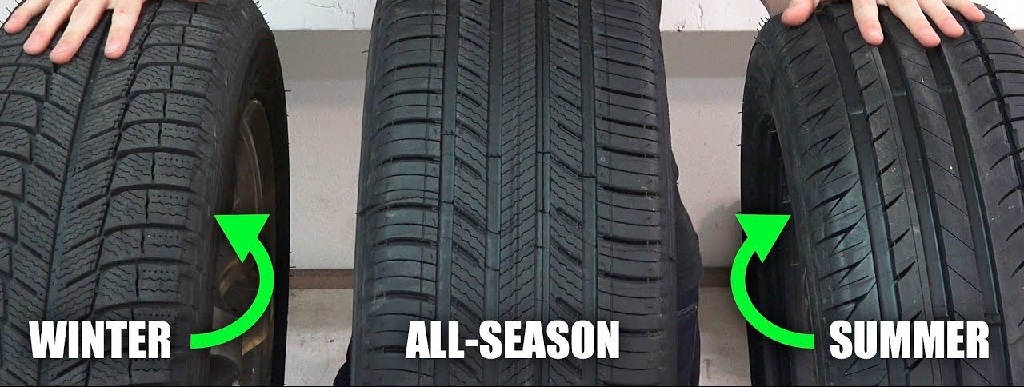
Differences Between Summer Tires, Snow Tires, and All-Season Tires
Replacing worn tires with new ones can be a straightforward process for customers purchasing the exact model, make, and size that was originally installed by the automaker. However, there is a multitude of makes, models, and sizes that can change the behavior of the car in different weather situations, and the variety allows you to mix things up. Most tires fall into three categories – Summer, Winter, and All Seasons – each one adapts to a specific set of criteria that vary by brand, and each has its own advantages and disadvantages. When comparing the capabilities of each tire with the driving situations you are likely to encounter, it is important to understand what each tire can and cannot do.
About Summer Tires:
Summer tires are made from a softer rubber compound and have large tread blocks to provide most of the contact with the road at higher temperatures (45 degrees and above), but for better traction, when temperatures drop, their soft rubber compounds harden, resulting in significant loss of traction. In addition, colder temperatures can lead to chipping on the edge of the tread block or to cracks in the tread compound. improper use of the tires, which is why they are seldom covered by the warranty.
About Winter Tires:
It is important to know that summer tires simply do not work in cold weather, regardless of whether there is snow or ice on the roads. The cornering behavior is severely impaired, and the braking distance can be significantly increased. a series of very thin cuts along the tread called grooves. While the deep tread can drain away excess mud, the grooves and other ridges pack the white matter between the tread blocks to improve snow-on-snow traction.
About All-Season Tires:
Most new cars come to dealerships with all-season tires that serve well on dry or wet roads and on roads with light snow. Although they perform well on hot, dry roads, they lack the handling and grip of summer tires, and the same is true of summer tires for grip in the rain compared to winter tires. If changing tires twice a year seems impractical, try the second set of cheaper winter steel or alloy wheels, especially one or two sizes smaller than summer tires. While they may not look as good, a smaller tire will perform better for less money. These tires usually have taller sidewalls, which improves ride quality. Keep in mind that winter tires are likely to wear out when the snow hits. Buying them early will ensure travelers aren’t stranded if a move is required.






